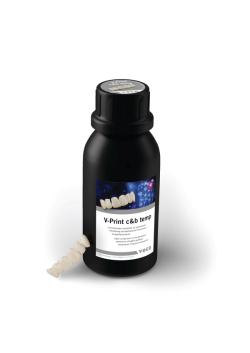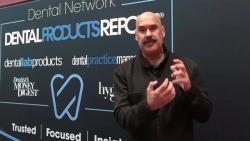- About Us
- Advertise
- Editorial
- Contact Us
- Terms and Conditions
- Privacy Policy
- Do Not Sell My Personal Information
© 2025 MJH Life Sciences™ and Dental Products Report. All rights reserved.
How Far Are We from Regrowing Teeth, and What Are the Other Options?
Regrowing teeth would present an excellent restorative option. We look at how close we are to making regrown teeth possible and what the next best option is until then.
Dental material companies work to create restorative materials that mimic the behavior, function, and esthetics of natural teeth. Many of them do an excellent job, performing admirably in all areas. However, even the best of the best usually fall short of what healthy, natural teeth provide.
A natural tooth free from decay or trauma is typically the best option for any patient. However, in a US population where the Centers for Disease Control and Prevention (CDC) cites statistics that most adult patients over the age of 20 have had at least 1 cavity, and 1 in 4 adults from age 20 to 64 have at least 1 cavity right now,1 this optimal option may be unrealistic.
But what if we could regrow natural teeth?
It sounds futuristic, like something we might achieve someday, and that is accurate as of right now. However, with major strides in dental research regarding dental stem cells, that future is closer than you think. Here’s what we know about how far away we are from regrowing teeth as of today and what treatment options could be available until then.
It All Starts with Stem Cells
For around 2 decades, scientists have successfully isolated dental stem cells. Found in permanent and baby teeth and areas around teeth, dental stem cells have unique capabilities like the ability to self-renew, transform into different types of cells, and help the immune system.2
In dentistry, there are specialized stem cells related to teeth and bones, which include:3
- Dental Pulp Stem Cells (DPSCs) are found in human teeth, specifically the dental pulp. They include hDPSCs (human dental pulp stem cells) and MDPSCs (multipotent dental pulp regenerative stem cells).
- Stem Cells from Human Exfoliated Deciduous Teeth (SHED) are derived from dental pulp, especially from naturally fallen or extracted baby teeth.
- Leptin-Receptor-Expressing Stem Cells (LepR+) that develop after birth and contribute to bone stability.
Researchers believe these cells have applications in various dental treatments. Many studies and tests using dental stem cells have treated dental issues like inflammation, pulpitis, periapical lesions, gum disease, and conditions like cleft lip and palate or acute ischemic stroke. Most of these treatments had good results, and no harmful effects were reported, concluding that dental stem cells are safe for various conditions.
Please click here to read the 2022 review of clinical articles and trials regarding dental stem cells.
How Dental Stem Cells Could Help Treat Patients
Stem cells have several potential uses in dentistry. For patients who have lost teeth due to accidents or untreated dental decay, stem cells could offer promising solutions for regenerating tooth tissues, bones, and dental pulp.
Dental stem cell implants work like this: Stem cells from a healthy tooth are put into a missing or damaged tooth to grow or rebuild it. However, it is important to mention that while this process has been tested in rabbits and humans, it was only to check if it's safe, not to grow a whole new human tooth.4
That said, researchers have been making progress in stem cell research for dentistry for some time now. In 2010, researchers at Columbia University grew a whole tooth in 9 weeks in an animal model by building a 3D scaffold and developing the stem cells around it. A few years later, Harvard researchers used their high-powered laser to activate stem cells and stimulate teeth to regenerate faster in mouse models in 2014.
Stem cell treatments have issues, though. For example, host compatibility is critical. If the donor doesn’t match the host, the host’s immune system will attack the invading cells. Plus, we must remember this stem cell approach hasn’t worked on humans (yet); the dentin grown with animal models is similar to natural human teeth but not an exact match.
So, even though researchers have grown a tooth in animals, the regeneration of human teeth is not yet possible. That is the disappointing news.
On the positive side, there have been some recent breakthroughs. There have been major strides in science toward regrowing teeth in dental pulp research and dental bone regeneration.
Regarding dental pulp research, researchers in 2018 identified MDPSCs with specific markers needed for regenerating dental pulp.The researchers now better understand how these work in the MDPSCs, which can be useful in developing treatments for pulpitis and pulp necrosis.5 Researchers in 2020 also discovered that implanting hDPSCs into injured teeth could regenerate dental pulp tissue, including blood vessels and sensory nerves. Additionally, the maturation of the roots continued.6
Significant findings have been made in dental bone regeneration, too. For example, researchers in 2020 discovered that LepR+ stem cells are crucial to regenerating alveolar bone in upper tooth sockets after tooth extraction.7 In 2020, researchers developed an adhesive hydrogel with stem cells and microparticles to aid oral cavity bone development. With its potential for tissue engineering to activate oral cavity bone regeneration, clinicians might find a way to overcome the challenges of employing hydrogels and the risk of exposure to saliva and blood.8
The following year, researchers at Kyoto University discovered that using antibodies can help with tooth growth and be modified to grow teeth in adults. By focusing on inhibiting gene USAG-1, they could stimulate mice biology to grow new teeth. Additionally, the research team discovered they could hinder the same gene in pregnant mice to facilitate normal tooth growth when the condition that prevents it, congenital tooth agenesis, is present.9
Later, the team did it again in ferrets. They chose ferrets because they have dental patterns similar to those of humans.10
Please click here to read the full paper regarding the discoveries about USAG-1 and stealth small interfering RNA (siRNA) interactions.
A Drug to Regrow Teeth?
Building upon those results with USAG-1, the Japan Agency for Medical Research and Development is working to deliver a drug that could help patients with congenital edentulism regrow teeth. The development is the work of the Japan Agency for Medical Research and Development and several medical institutions and research labs throughout the country.11
Once the drug is ready for human testing, clinical trials will begin in July 2024. Once the drug's safety is established, the trial will focus on children aged 2 to 6 who exhibit symptoms of anodontia. The participants will receive one drug dose to see if it initiates tooth growth.
The team's full future vision is a tooth-regrowth medicine that becomes a treatment modality for edentulism that clinicians can offer patients along with dentures and implants. They hope the drug will be ready for clinical use by 2030.12
Toregem Biopharma is heading up the clinical trials. The lead researcher on the project is Dr. Katsu Takahashi, head of the dentistry and oral surgery department at the Medical Research Institute Kitano Hospital, who has been working on regrowing teeth since he was a graduate student. Takahashi feels confident he can get the job done, too.
So, science has not yet discovered how to regrow natural teeth…yet. However, the collective work in the past couple of decades and the plans for this one portend a future where growing natural teeth is a clinical reality and a treatment modality that dentists can offer their edentulous patients. Moreover, dental cell research could deliver excellent treatment options for patients with decayed or failing teeth. Until then, dentistry can lean on the chemistry of materials science and implant dentistry and dentures to restore patients’ missing or decayed teeth.



